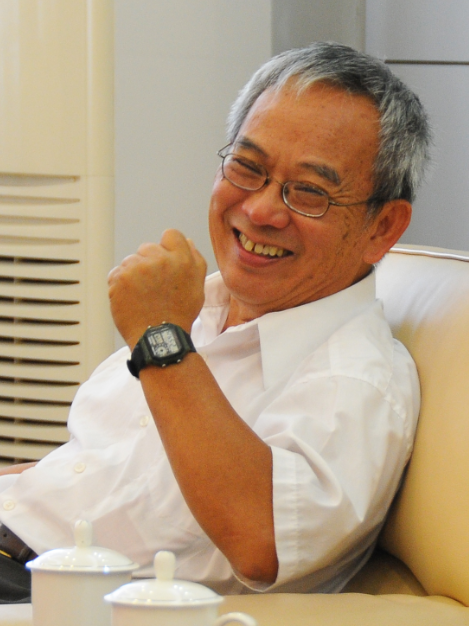

*Attend these AOGS2021 Webinars Free! – Registered Attendees Only
All AOGS e-news subscribers are eligible to attend. Please help us forward this information to your friends and
professional contacts. If not yet a subscriber, they need sign up for an account on MARS to receive
the complimentary invite. Not yet a subscriber?
Sign up Here to Receive Your Complimentary Invitation
Axford Lectures | Medal Lectures | Section Distinguished Lectures
All times shown are Singapore Standard Time (GMT+8)
| IG Section Lectures & Meeting | Room: WB1 |
| Transition | 13:00 – 13:30 |
| IG Kamide Lecture | 13:30 – 14:15 |
| IG Distinguished Lecture | 14:15 – 15:00 |
| IG Section Meeting | 15:00 – 16:00 |

Mon-02 Aug, 13:00 – 16:00, Room: WB1
Distinguished Lecture - IG (Save a seat)
“Principle of Parsimony, Scales, and Fake Sciences”
Tian-Chyi Jim YEH
University of Arizona
Environmental fluids migrate at velocities of many scales, influenced by many factors at
a multiplicity of scales. Due to difficulties in predicting exact motions of water molecules, and consideration
of the scale of our interests (bulk behaviors of many molecules), Fick’s law (diffusion concept) has been
developed for predicting solute diffusion process in space and time. Further, G.I. Taylor (1921) demonstrated
that the random motion of the molecules reaches the Fickian regime in less a second and will reach the ergodic
condition if our sampling scale is large enough. Fick’s law is widely accepted for describing molecular
diffusion as such. This fits the definition of the parsimony principle at the scale of our concern.
Similarly, advection-dispersion or convection-dispersion equation (ADE or CDE) generally has been found
suitable for predicting solute concentration breakthroughs in uniformly packed soil columns. This is due
to the fact that the solute is released over the entire cross-section of the column, and it thus has
encountered many pore-scale heterogeneities and met the ergodicity assumption. Further, the uniformly
packed column contains a large number of stationary pore-size heterogeneity. The solute thus can reach
the Fickian regime after traveling a short distance along the column. Besides, observed breakthrough
curves are the concentrations integrated over the column cross-section (the scale of our interest), and
they meet the ergodicity assumption embedded in the ADE and CDE.
On the contrary, scales of heterogeneity in most groundwater pollution problems evolve as contaminants travel. They are much larger than the scale of our observations and our interests. The ergodic and the Fickian conditions are thus difficult to be met. Upscaling and modifying Fick’s law for solute dispersion, and deriving universal scaling rules of the dispersion for the field- or basin-scale pollutant migrations are merely misuse of the parsimony principle. They create red herrings and fake sciences ( i.e., the development of theories for predicting processes that can not be observed.) The appropriate principle of parsimony for these situations is to map large-scale heterogeneities as detailed as possible (or to the scale of our observations and interests) and to adapt Fick’s law for effects of small-scale heterogeneity resulting from our inability to characterize them at high resolutions.
Biography
Dr. Yeh is a Professor in the Department of Hydrology and Atmospheric Sciences at the University of Arizona. His recognition of the multi-scale variability of hydrologic processes and properties as well as the scale of models and observations has led him to challenge the traditional analyses of aquifer tests and guided us to an understanding of the ensemble mean nature of Darcy’s and Fick’s laws. Further, he stressed the disparity in scales of the model, observations, objectives and the lack of necessary conditions are the roots of uncertainty (nonuniqueness) in forward and inverse solutions. As such, he promotes stochastic analysis and data collection. These are major breakthroughs in not only hydrologic sciences but in other areas. More importantly, his philosophy--intelligent collection and analysis of data and his pioneering work on the successive linear estimator, have blossomed into hydraulic tomography (HT)---a revolution in aquifer characterization. It has motivated the developments and validations of HT (resulting in many papers by various researchers worldwide). Besides, Yeh has fostered the application of geostatistics in other fields related to hydrologic sciences. For example, the application of stochastic concepts and techniques to the study of effects of heterogeneity on slope stability, on the evolution of piping erosion along river levees as well as on detecting blockages in viscoelastic pipelines. Recently, he published a groundbreaking textbook, Flow Through Heterogeneous Geologic Media. It articulates multi-scale variability and scale issues in hydrologic sciences and elucidates the necessity and usefulness of stochastic theories to both academics and practitioners.